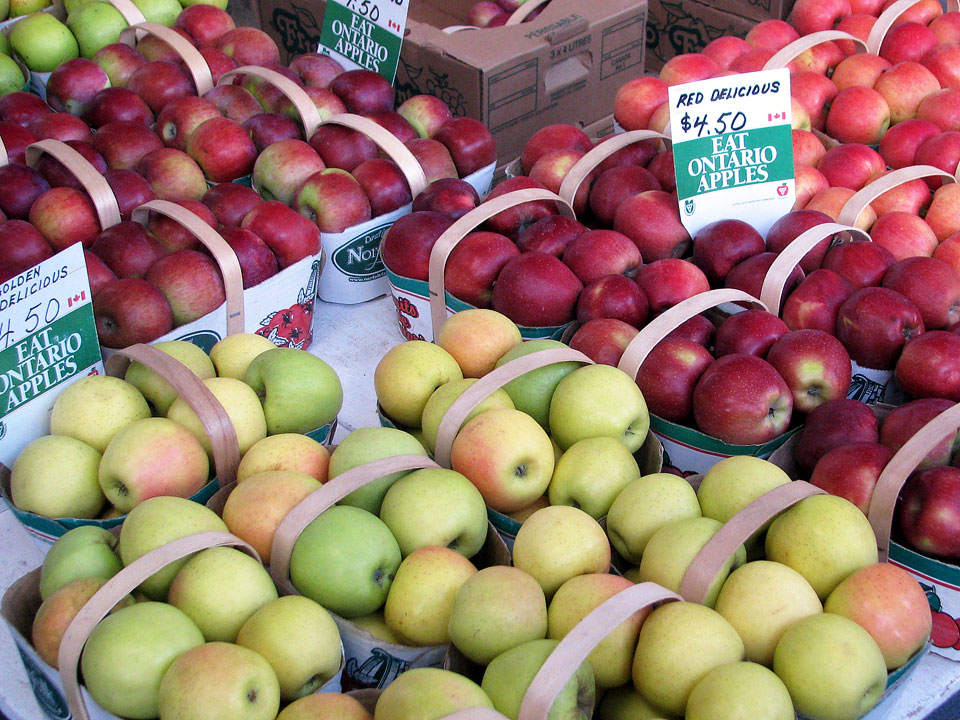
More fruits and vegetables — up to 45 per cent — go to waste annually than any other type of food, according to the Food and Agriculture Organization of the United Nations. That’s the equivalent of 3.7 trillion apples being wasted each year by producers and consumers.
Proper storage can help prevent food waste. Plant agriculture professor Gale Bozzo is studying how to store apples and pears so they last longer.
“I’ve always been interested in plant science and how plants deal with environmental stress,” he says.
Fruits naturally deteriorate over time so they can release their seeds. Slowing down the ripening process can save money and reduce waste. Working with the Ontario apple and pear industries, Bozzo is looking at ways to keep fruit in a “preserved freshness state.”
Apples typically have a long shelf life after harvest. Under the right conditions, some cultivars of apples can stay fresh for almost a year. Most of the apples being sold in grocery stores right now were harvested last fall. “They’re perfectly fine,” says Bozzo. “I eat them all the time.”
Commercial fruit growers use controlled atmosphere (CA) storage to slow down the ripening process. “Controlled atmosphere is a way to suspend that ripening-related deterioration,” he explains “We use low oxygen and high carbon dioxide atmospheres as a way of preventing respiration and ripening-related senescence.”
Most fruits and vegetables release a gas called ethylene that promotes ripening. To slow down the ripening process, a ripening inhibitor called 1-Methylcyclopropene (1-MCP) is added to block ethylene receptors in the fruit and can be used in combination with CA storage. The gas is non-toxic and is often used on apples and pears within a week of harvesting.
Some fruits only ripen when they’re still attached to the plant, while others continue to ripen after they’ve been picked. Bananas, for example, are picked when they’re still green and continue to ripen en route to their destination. Apples are picked when they’re ripe because that’s when they’ve reached their optimal eating quality.
Extending the shelf life of fruit gives growers more time to sell it. “One of the reasons why they’re trying to preserve food for longer is because of all the competition from foreign markets,” says Bozzo. “They’re forced to store food for longer periods of time. If you don’t, it wastes and you’re losing tonnes of produce.”
Each cultivar has specific storage requirements based on temperature and the right blend of oxygen and carbon dioxide. Spoilage can occur when the storage conditions aren’t ideal and “you try to push the boundaries,” he says. Trying to preserve fruit past its prime can lead to browning, softening and off flavours. Combining cold storage with 1-MCP can help prevent these storage-related problems.
Bozzo is currently testing storage conditions for Honeycrisp apples and Cold Snap pears picked last fall. The apples are stored in CA units in the Bovey Building. A computer controls the temperature (usually around 0 to 3°C) and monitors gas levels on an hourly basis. If the oxygen level rises, nitrogen is added to lower it. The fruit is evaluated for indicators of eating quality, such as firmness, flesh browning, peel discoloration, starch levels and sweetness.
The CA units allow researchers to test different atmospheres at the same time using various temperatures, gas blends and applications of 1-MCP.
“It’s like a big Ziploc bag,” says Bozzo.
Bozzo’s research is funded by the University’s partnership with the Ontario Ministry of Agriculture, Food and Rural Affairs.